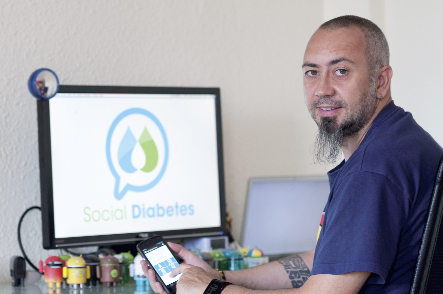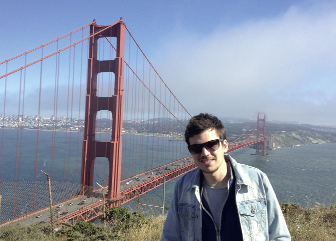Two and a half years ago, Víctor Bautista was diagnosed with diabetes mellitus. His life changed completely as of that moment: Bautista suddenly became dependent on insulin, a substance his body could not create, and the absence of which prevented it from regulating his blood-sugar level.
His days now revolved around what he ate, when he ate and the periods when he did not eat. Like so many other diabetics, he had to self-inject insulin at regular intervals and also count the carbohydrate intake of each kind of food, which eventually led him to eat monotonously in order to avoid over-complicated calculations.
However, far from becoming demoralised, Víctor leveraged his professional experience in IT to improve his quality of life and that of other diabetics around the world. He decided to create an app for the Android mobile operating system that could calculate the calories per gram of each type of food he was going to eat, and he named it “Social Diabetes”.
This would give him a clear idea of the carbohydrates he would eat at a restaurant with a given meal, thus enabling him to adapt his insulin dose depending on his meal. This initial function of Social Diabetes significantly increased his freedom to enjoy meals out with his wife or friends, but it was not the only advantage. The application can also set up a warning system to remind the user about injection times and the amount of carbohydrates consumed throughout the course of the day.
This latter function is very important because it prevents nocturnal hypoglycaemia, a highly dangerous condition caused by going to bed with low blood-sugar levels. If a diabetic goes to bed without a sufficient sugar intake, Social Diabetes puts out a warning and advises the user on what type of food to eat before going to bed.
Once the app was created, Víctor partnered up with a former university colleague to launch it commercially. They developed an app for purchase as well as a free, simpler version for mobiles and tablets. Since its release it has been downloaded more than 11,000 times and has been translated into 8 languages, but what is most interesting is that, according to Bautista’s calculations, the use of Social Diabetes could save the government up to 1,500 euros per patient in hospital expenses, ambulances, etc. In 2012, UNESCO gave them the WSA Mobile Content award for the best health application, which they picked up in Abu Dhabi in January.





